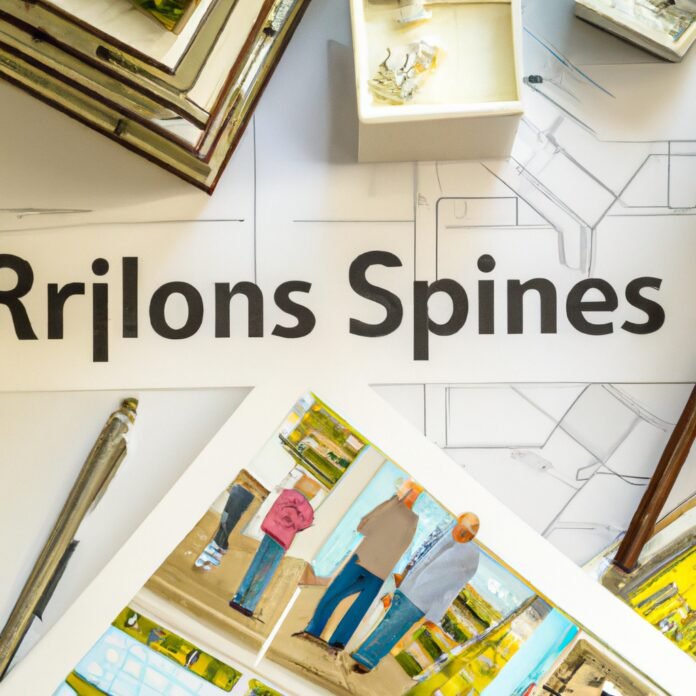As we age, finding the right living situation can become more of a challenge. While a young person can choose between many kinds of living options, seniors often have to look at different considerations like medical needs, social opportunities, and overall lifestyle. In this article, we will discuss the various residential options available for seniors and discuss what factors to consider when choosing the ideal living arrangement.
1. Finding the Right Fit: Residential Options for Senior Living
As a senior, one of the most important aspects of your quality of life is finding the right living situation. When weighing the options for residential options, there are several things to consider.
- Independent Living: This type of living environment is best for seniors who want to have a sense of autonomy and don’t need additional medical or emotional care. Typically, there is less staff available onsite with independent living. Residents can still enjoy amenities such as recreation centers, libraries, and swimming pools.
- Assisted Living: This type of community is best for seniors who need additional assistance with everyday activities such as meals, housekeeping, or medications. This can be a great option for helping seniors stay independent by providing them with a sense of security.
- Continuing Care Retirement Community: This type of living environment can provide a full range of care from independent living to skilled nursing care. This may be a great choice for those who want to have access to a variety of care options, from supportive services to nursing care.
Once you’ve identified your needs and the type of care you need, tour the facility and speak with the staff. Ask questions about the services provided, the activities available, and what the cost of living there would be. Take your time and don’t feel pressured to make a decision before you are ready. After all, finding the right fit for you is what matters the most.
2. Assessing Care Level and Quality of Life Requirements
When assessing a care plan for a patient, it is important to accurately assess the care level and quality of life requirements that the patient requires. Evaluating these needs accurately is essential for providing the best care and assisting the patient in recovering as quickly and efficiently as possible.
The first step to assessing the care level is to get a thorough understanding of the patient’s current health status. This includes reviewing the patient’s medical history and symptoms, as well as any tests that have been conducted. It also involves gathering information about the patient’s lifestyle and daily activities to determine what care and activities the patient will need in order to remain independent.
Once the care level is determined, the next step is to assess the patient’s quality of life needs. This includes evaluating the patient’s emotional and psychological health as well as physical needs. This can be done by conducting a physical examination, reviewing the patient’s medical records, and talking with the patient and their family members. It is also important to consider the patient’s social needs, such as providing companionship or access to recreational activities, and to understand their spiritual requirements.
By thoroughly assessing both the care level and quality of life requirements for each patient, healthcare providers can ensure that the most appropriate care plan is developed and implemented. This helps the patient receive the highest quality of healthcare and provide the best possible outcome.
3. Exploring Independent Living Alternatives
Taking the leap and undergoing the search for independent living alternatives can often feel overwhelming. Fortunately, it often presents far more empowering opportunities than it does challenges. Let’s explore some of the various options that are available.
- Rent or Franchise a Room/Apartment/House
- Make a Living Through a Remote Job
- Start a Side Business
- Barter for Goods/Services
- Take on a Live-In Role
Rent or Franchise a Room/Apartment/House
Renting or franchising a new living space is the most common route among those seeking independence. It can also be a great way to help kickstart your journey of autonomy. However, it’s important to be aware of the various legal/financial implications and what you can reasonably afford. According to this study, for example, one of the most common unanticipated costs is unexpected repairs.
Make a Living Through a Remote Job
The internet has revolutionized working opportunities. With the plethora of “work-from-anywhere” programs out there, long gone are the days of having to be physically at a certain location to make money. For digital nomads, this presents the perfect opportunity to explore all kinds of independent living arrangements.
4. Weighing the Benefits of Assisted Living
When aging individuals face physical, cognitive or emotional changes, assisted living can be a beneficial option. Navigating this decision process can be difficult, so it is important to consider the pros and cons of assisted living from several perspectives.
- Financial – Assisted living is often an affordable solution for elderly individuals who want to maintain independence with some daily assistance. Depending on the package of services chosen and the cost of living in the area, the cost of assisted living varies.
- Health – With access to medical staff and care, elderly residents can better manage their current health needs and stay on top of medications or treatments. Maintaining diet and activity is also important, so meals are often provided in an assisted living facility, as well as activities and programs for socialization and exercise.
- Social – One of the biggest benefits to assisted living is the level of socialization and connection elderly individuals have with their peers. Regardless of the level of available care, these facilities offer seniors companionship and social outlets they may not otherwise access.
Additionally, by knowing there’s backup or support supplemental to family and friends, the elderly can feel more secure as they age. Ultimately, only individuals themselves can decide if assisted living is the best option, taking into consideration their physical, emotional, and financial needs.
5. Making the Decision to Remain in the Family Home
Making the big decision to remain in the family home can be a daunting one. Whether you’re interested in making upgrades to a current property or facing endless repair bills, here are a few considerations to keep in mind.
- Budget: As with any major decision, it helps to calculate the cost of upkeep and improvements ahead of time.
- Time Frame: If you plan to stay in the family home for the long-term, you may want to consider modifications that will help ensure your comfort and convenience as you age.
- Lifestyle: From entertaining in your backyard to hosting overnight guests, it’s important to consider how different features of the house can support your daily life.
When deciding to stay in the family home, you’ll also want to factor in any potential resale value of the property. Will a fresh coat of paint or new fixtures up the price of future sales?
Every family home is unique and each property will require its own individual assessment before any permanent decisions are made. Consider the four key factors above and keep your family’s individual needs and preferences in mind when making the choice.
For seniors, choosing the right type of residential arrangement is an important step in maintaining a high quality of life. With the right planning and research, you can ensure that your housing needs are met and that you are able to age in place with dignity. So, begin looking into the options available and make sure that you’re selecting the best residence for your unique situation. After all, it’s never too soon to start planning for your future.


